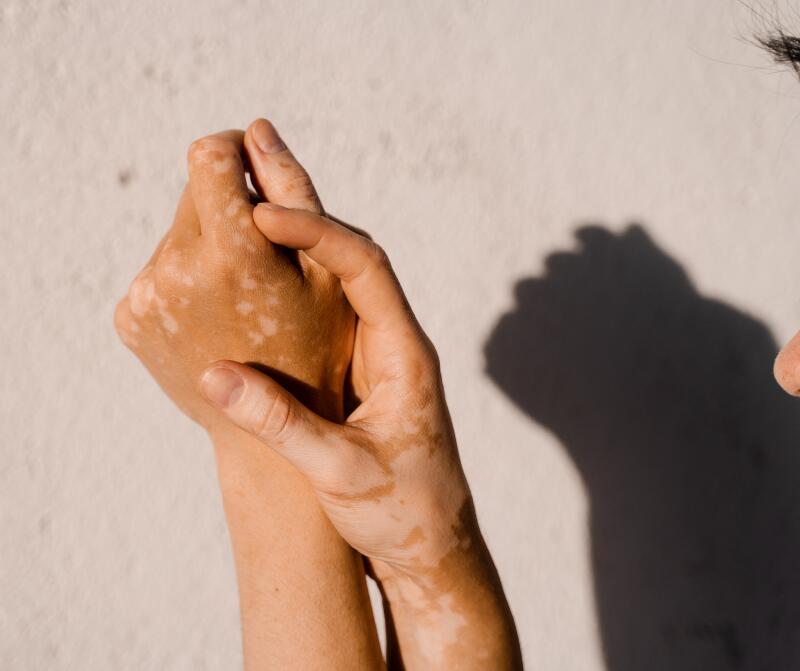-
Your concerns
Our articles to help you gain a better understanding
-
Our solutions
-
DUCRAY Dermatological Laboratories
Our articles to help you gain a better understanding

Hypopigmentation is the term given to a group of skin conditions characterized by total or partial melanocyte failure. Normally, these cells give the skin its color by synthesizing a pigment called melanin. Hypopigmentation generally results in the formation of white spots on the face and body.
Skin pigmentation is a complex and multifactorial phenomenon. Everyone is familiar with brown spots, caused by several factors such as the sun, hormones or age. However, there are several skin diseases that involve hypopigmentation. One example is vitiligo, which is an autoimmune disease that causes melanocytes to disappear. This results in the development of light marks of varying intensity and size in different places on the face and body.
Another disease associated with hypopigmentation is called albinism. It’s a genetic disease that results in inefficient melanin production. Depending on the case, the person may have either low levels of melanin or none at all. Skin discoloration on the face and body, the hair, combined with eye damage is characteristic of the oculocutaneous form of the disease, but there are also forms that affect purely the eyes and where skin pigmentation remains normal.
No, hypopigmentation is not an infection and is not therefore contagious. Similarly, hypopigmentation is not related to poor hygiene or skin care. Unfortunately, misconceptions exist, and some people are still afraid to shake hands with someone with vitiligo.
The very visible and stubborn nature of hypopigmentation can affect the quality of life of people affected and reduce their self-confidence. Hypopigmented skin rarely goes unnoticed at school or at work. It’s not always easy to cope with other people staring and asking questions.
has specialized knowledge of the various skin diseases and their treatments.
Current treatments for vitiligo include medicinal creams and ointments (corticosteroids or calcineurin inhibitors), phototherapy, surgery, etc. Medical make-up can prove very useful for camouflaging hypopigmented skin and restoring self-esteem. It is a treatment in its own right.
Research is progressing in the field of hypopigmentation, and in particular vitiligo. New treatments will no doubt be available soon.
Hyperpigmentation